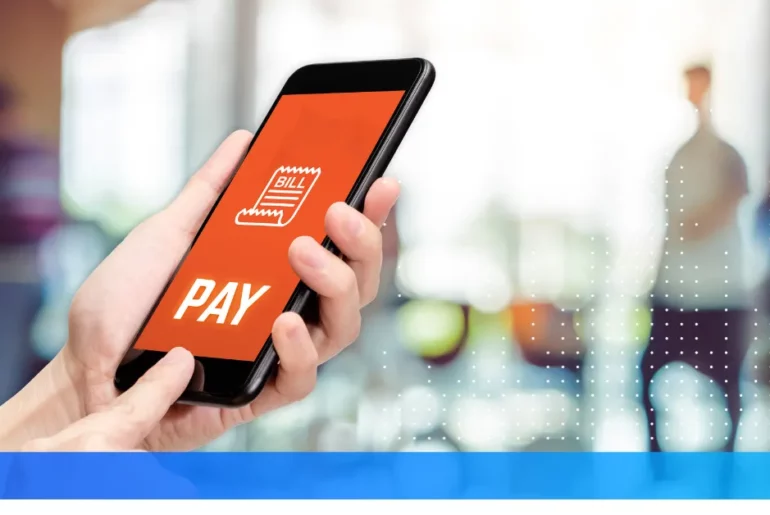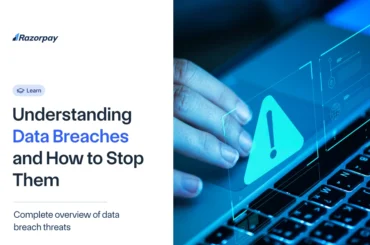Table of Contents
What is Digital Payment?
Digital payments are transactions made using electronic or online methods, where both the payer and payee use digital platforms to exchange money. Simply put, they are the transfer of funds between payment accounts using a digital device or channel.
These payments can happen online or at physical stores. For example:
- Paying for an order on an e-commerce platform using UPI.
- Using a digital wallet, credit card, or mobile banking app at a local grocery store.
Digital payments can be fully or partially digital, depending on how the transaction is processed. They offer a secure, convenient, and efficient way to transfer money.
Why Choose Digital Payments?
Digital payments offer a faster, safer, and more cost-effective alternative to cash transactions, especially in emerging and developing countries. Every day, billions of dollars are paid in cash for wages, social benefits, humanitarian aid, and supplier transactions. Shifting to digital payments can:
- Improve financial access for low-income groups, especially women.
- Enhance security by reducing the risks of theft and fraud.
- Increase transparency, making it easier to track and manage funds.
- Lower transaction costs for businesses, governments, and global organizations.
By embracing digital payments, economies can become more inclusive and efficient, benefiting both individuals and businesses.
Digital Payment Examples
1. Mobile payment apps
Apple Pay, Google Pay, Paypal, and Samsung Pay
2. Digital cards
3. Contactless payments
4. Bank transfers
5. Biometric payments
6. National Electronic Toll Collection (NETC) FASTag
Types of Digital Payments In India
1. Banking Cards
Indians widely use banking cards, debit/credit cards, or prepaid cards as an alternative to cash payments. In 1981, the Andhra Bank launched the first credit card in India.
Cards are preferred because of multiple reasons, including, but not limited to, convenience, portability, safety, and security. This is the only mode of digital payment that is popular in online and physical transactions. Many apps are being launched to manage card transactions, like Cred, Square, etc.
2. Unstructured Supplementary Service Data(USSD)
The unstructured supplementary service data (USSD) was launched for those sections of India’s population which do not have access to proper banking and internet facilities. Under the USSD, mobile banking transactions are possible without an internet connection by dialling *99# on any essential feature phone.
This number is operational across all telecom service providers (TSPs) and allows customers to avail of services, including interbank account-to-account fund transfer, balance enquiry, and availing of mini statements. Around 51 leading banks in India offer USSD service in 12 languages, including Hindi and English.
3. Aadhaar Enabled Payment System (AEPS)
The Aadhaar Enabled Payment System (AEPS) is a bank-led model for digital payments initiated to leverage the presence and reach of Aadhar. Under this system, customers can use their Aadhaar-linked accounts to transfer money between two Aadhaar-linked bank accounts. According to data from the National Payments Corporation of India (NPCI), the AEPS had crossed transactions over 205 million till February 2020.
The AEPS does not require physical activity like visiting a branch, using debit or credit cards or signing a document. This bank-led model allows digital payments at PoS (point of sale / micro ATM) via a business correspondent, known as Bank Mitra, using Aadhaar authentication. The AePS fees for cash withdrawal at Business Correspondent points are around ₹15.
4. Unified Payments Interface (UPI)
The UPI is a payment system that culminates numerous bank accounts into a single application, allowing money transfers between parties. Compared to NEFT (national electronic funds transfer), RTGS (real-time gross settlement), and IMPS (immediate payment service), the UPI is considered a well-defined and standardised process across banks. You can use UPI to initiate a bank transfer anywhere in just a few clicks.
The benefit of using UPI is that it allows you to pay directly from your bank account without the need to type in the card or bank details. This method has become one of the most popular digital payment modes in 2020, with October witnessing over 2 billion transactions.
Related Read: What is the Difference Between IMPS and NEFT Fund Transfer?
5. Mobile Wallets
Mobile wallets are a type of wallet where you can carry cash in a digital format. Often, customers link their bank accounts or banking cards to their wallets to facilitate secure digital transactions. Another way to use wallets is to add money to the mobile wallet and use the balance to transfer money. You can also check out the digital wallets guide, for necessary details and clarify confusions, if any.
Some popularly used ones include Paytm, Freecharge, Mobikwik, mRupee, Vodafone M-Pesa, Airtel Money, Jio Money, SBI Buddy, Vodafone M-Pesa, Axis Bank Lime, ICICI Pockets, etc.
Related Read: What is the PhonePe transaction limit for 2025?
6. Bank Prepaid Cards
A bank prepaid card is a pre-loaded debit card issued by a bank, usually meant for single use or can be reloaded for multiple uses. It is different from a standard debit card because the latter is always linked to your bank account and can be used numerous times. This may or may not apply to a prepaid bank card.
Customers can create a prepaid card with an account that complies with Know Your Customer (KYC) norms. Corporate gifts, reward cards, or single-use cards for gifting purposes are the most common examples of these cards.
7. PoS Terminals
The PoS is the location or segment of a sale. These terminals were considered checkout counters in malls and stores where payments were made for a long time. The most common type of PoS machine is for debit and credit cards, where customers can make payments by simply swiping the card and entering the PIN (personal identification number).
With digitisation and the increasing popularity of other online payment methods, new PoS methods have emerged. First is the contactless reader of a PoS machine, which can debit any amount up to ₹2000 by auto-authenticating it without needing a PIN.
Related Read: What is the Point-of-Sale (POS) limit For Debit Cards?
8. Internet Banking
Internet Banking, also known as e-banking or online banking, allows the customers of a particular bank to make transactions and conduct other financial activities via the bank’s website. It requires a steady internet connection to make or receive payments and access a bank’s website called Internet banking.
Today, most Indian banks have launched their Internet banking services. It has become one of the most popular means of online transactions. Every payment gateway in India has a virtual banking option available. Some of the top ways to transact via Internet banking include NEFT, RTGS, and IMPS.
9. Mobile Banking
Mobile banking refers to conducting transactions and other activities via mobile devices, typically through the bank’s mobile application (app). Today, most banks have mobile banking apps that can be used on handheld devices like mobile phones and tablets and sometimes on computers.
Mobile banking is known as the future of banking, thanks to its ease, convenience, and speed. Digital payment methods, such as IMPS, NEFT, RTGS, and other services like investments, bank statements, bill payments, etc., are available on a single platform through mobile banking apps. Banks encourage you to operate digitally as it makes processes easier for them.
10. Micro ATMs
A micro ATM is a BC device to deliver essential banking services. These correspondents, who could be local store owners, will serve as a ‘micro ATM’ to conduct instant transactions. They will use a device that will let you transfer money via your Aadhaar-linked bank account by merely authenticating your fingerprint.
Essentially, the BC will serve as a bank. You need to verify your authenticity using UID (Aadhaar). The essential services that micro ATMs will support are withdrawal, deposit, money transfer, and balance enquiry. The only requirement for Micro ATMs is to link your bank account to Aadhaar.
Related Read: What are the Different Types of Digital Wallets?
How Does Digital Payment Work?
Have you ever wondered how digital payments really work? Let’s simplify it for you in this section.
1. The Parties Involved
In digital payments, simplicity on the surface masks a complex network of intermediaries, ensuring smooth and successful transactions. Key players in digital payment systems include the merchant (payee) and the consumer (payer), whose interactions initiate the digital payment process. Both parties require a bank account and online banking to engage in digital transactions.
Additionally, other key players include the bank and the payment network, which facilitate secure fund transfers.
2. Bank Accounts
For digital payments, merchants and consumers participate as customers, so they need to have bank accounts with online banking features. Bank accounts build up the foundation of conducting e-transactions by storing funds securely and endorsing transfers.
3. Step-by-step Transaction
- The consumer starts payment transactions using UPI, mobile wallets or a similar option of his choice.
- The payment details are transmitted securely into the payment network.
- The payment network checks for the balance, thereafter, funds are moved from the consumer’s bank account to the payee’s bank account.
- A confirmation is sent to both the buyer and seller to confirm that the transaction has been completed.
4. Payment Rail
Payment rails serve as the backbone infrastructure that enables the transfer of funds between banks. They function as the pathways through which transactions move, linking institutions and guaranteeing the smooth flow of funds. Payment rails exist in many formats, such as automated clearing house (ACH), card networks and real-time payment systems, each designed for transaction types and processing speeds.
Related Read: What is Stop Payment and How Does it Work?
Benefits of Digital Payments
Some of the key advantages of digital payment in India that have made them a preferred choice for transactions are:
1. Faster Payments
Digital payments allow immediate transactions that can be processed immediately, reducing the waiting time that one has to go through with traditional payment methods. This makes transactions seem smooth and efficient.
2. Convenience in the Payment Procedure
Digital payments enable swift and hassle-free transactions from your devices, eliminating the need for physical presence or documents. Whether you’re paying bills, shopping online, or transferring funds, digital payment methods offer a user-friendly experience that saves both time and effort.
3. Better Payment Security
Digital payment systems use encryption and system authentication protocols, which minimise the risk of unauthorised access and effectively prevent fraud. Your financial information is protected, keeping you stress-free throughout the entire process of making digital payments.
4. Improved Efficiency
Automation and digitisation in payment processes have significantly enhanced operational efficiency. By minimising manual intervention, errors are reduced, and financial workflows are streamlined, resulting in a more efficient and error-free system.
5. Digital Record of Transactions:
Digital payments provide a traceable account of transactions, thereby guaranteeing safety. Such efficiency and credibility allow individuals and businesses to maintain accurate financial records. It is easy to monitor the payment history and can be referred to when required.
6. Reduced Costs
The digital payment framework eliminates the requirement of physical infrastructure, paperwork, and manual handling. This reduces the cost of transactions for business enterprises and financial institutions. Also, digital transactions usually include a lower cost of transfer as compared to traditional banking methods.
7. Ease of Use
The payment systems facilitate customer comfort. The old cash-processing machines that could only recognise clear notes and coins are being replaced by ATMs, which are accessible and easy to use. Digital payment systems are easy to operate and will not take additional effort to understand how they work.
8. Low Fees
Digital payment methods typically entail lower transaction fees compared to banking methods, contributing to overall cost efficiency.
9. Boost Revenue
Merchants can benefit from a wider consumer base and better cash flow by utilising digital payment methods, leading to higher revenue. Digital payments offer an efficient system, leading to higher customer satisfaction and smoother transactions, which can attract more customers in the future.
10. Discounts and Savings
Many online platforms provide discounts, cashback, or loyalty programmes. These discounts motivate the customers to go for the digital payment option, which saves them money and provides several benefits.
11. Low Risk of Theft
Digital payments diminish the possibility of the actual loss of money since it’s not physical. Transactions occur in the digital world, therefore rendering the necessity of holding large amounts of currency physically unnecessary. This safeguards payments by preventing direct cash transactions and ensuring their protection.
12. Customer Management
Digital payment systems can frequently oversee and monitor the customers’ transactions, preferences, and feedback, which gives the business more control over these aspects. This improves overall customer management by adjusting service offerings based on customer behaviour.
13. Better Customer Experience
The ease and convenience offered by digital payments enable customers to enjoy superior service, thereby enhancing their experience. Simplified payment processes result in increased customer satisfaction and a greater likelihood of future collaboration with the business.
14. Efficient Record-Keeping Features
Through the digital infrastructure, digital payments for offline businesses are recorded efficiently; thus, the business environment is friendlier than before. Today businesses and individuals can easily track, control, and analyse their financial activities to obtain financial transparency and improve the financial management process. A critical financial metric for D2C and e-commerce businesses to track is their customer acquisition cost (CAC), which is essential for ensuring long-term profitability.
Razorpay Payment Gateway: Your Digital Payment Partner
Razorpay is India’s first full-stack financial solutions provider and aims to enable all businesses, enterprises, entrepreneurs, and freelancers to adopt digital payment methods to grow their businesses. Razorpay Payment Gateway is the flagship product, providing holistic payment solutions to both big and small enterprises with the lowest payment gateway charges in the market. If your venture has a website or an app, then Razorpay Payment Gateway should be your go-to option. Some of the key features and benefits include:
- Accept all Payment Modes: Multiple options include domestic and international credit & debit cards, EMIs (equated monthly instalments), PayLater, net banking, UPI, and mobile wallets.
- Flash Checkout: Thanks to the option of saving cards, there is no need to type in the card details every time – saving time and increasing sales.
- Powerful Razorpay Dashboard: The dashboard provides efficient monitoring through reports, detailed statistics on refunds and settlements, and much more.
- Protected and Secured: The PCI DSS Level 1 compliance, with frequent third-party audits, and a dedicated internal security team ensures the safety of your data.
- Run Offers Easily: The Razorpay dashboard allows you to run every promotional offer at the click of a button.
Read More: What is Payment Gateway and How Does It Work?
More From the Razorpay Payment Suite
1. Razorpay Payment Links
Payment Links are one of the easiest ways to accept payments online. You can generate a link from the Razorpay dashboard or ePOS app and share it with your clients. By clicking the link, your customer can pay within minutes.
Razorpay payment links ensure safe money movement with100% secure ecosystem guarded with PCI DSS compliance. These are extremely simple to generate and require no prior coding or design knowledge. It offers more than 100 payment options to a customer, ensuring timely and accurate payment.
2. Razorpay Payment Button
Since most businesses already have an online presence, we developed a product to integrate digital payments on an existing website. The Razorpay payment button allows you to accept payments on any website or webpage by adding a code line. Within five minutes, a customised code will be embedded on your website to start accepting payments.
Some of the key uses of a payment button:
- Add an integrated checkout on your website
- Start accepting fees without any integration or coding efforts
- Use one of the existing templates or create one of your own
3. Razorpay Payment Pages
For people who want to give information and receive payments simultaneously, Razorpay is a better alternative. With Razorpay Payment Pages, you can set up your venture’s mini-website in less than five minutes. Payment pages allow you to add your business information, showcase pictures, and accept payments – all in one. With our ready-to-use templates, you can accept payments for multiple payment modes.
4. Razorpay Subscriptions
Razorpay Subscriptions is a means to collect recurring payments without troubling the customer to intervene at each payment. This means that professionals can obtain a steady flow of fee payments without worrying about operational barriers. It ensures complete visibility and flexibility, and the customer can control his regular payments.
With the rise of digital payments, recurring payments via cards are becoming less popular. Thus, Razorpay subscriptions also bring with them the valuable features of UPI AutoPay. Under this feature, customers can set up recurring payments within minutes via their UPI app.
Join India’s Journey Towards Digital Payments
The digital payment wave in India is not going anywhere. With financial literacy and accessibility on everyone’s mind, online payments will grow exponentially. As a business and a professional, this is the right time to onboard the digital payment wagon and enable your customers to transact online securely.
Frequently Asked Questions (FAQs)
1. Do digital payments make you responsible?
Yes, digital payments make you responsible as a business owner or individual. When you choose to accept digital payments, you must ensure the security and integrity of the transactions. This includes protecting customer data, implementing secure payment gateways, and staying updated with the latest security measures to prevent fraud or data breaches.
2. Will digital payments replace all cash?
Despite the rise in popularity of digital payment in India, it seems unlikely that physical currency will be entirely phased out soon. Cash still holds significance in various instances and for low-value transactions.
3. Is electronic payment safe to use?
With advancements in digital payment technology, demographic shifts, and the evolving cyber-security landscape, online transactions are more popular and secure than ever.
4. Which digital payment methods are commonly used in India?
In India, popular digital payment options include UPI wallets such as Paytm and PhonePe, internet banking services, debit/credit cards, and AEPS.
5. How has the government contributed to the growth of digital payments in India?
The Indian government has played a role in promoting payments through initiatives like demonetisation. This initiative aimed to reduce cash-based transactions while encouraging the adoption of electronic payment methods. The introduction of UPI by the NPCI has transformed how people conduct transactions.
6. What is the regulatory framework for digital payments in India?
Digital payment regulation in India is primarily overseen by the Reserve Bank of India (RBI). The RBI establishes rules and standards to ensure payment systems’ security, reliability and effectiveness.
7. Can you provide examples of successful digital payment implementations in India?
Some notable digital payment initiatives in India include the BHIM app, which facilitates UPI-based transactions. Additionally, integrating Aadhaar with payment platforms has simplified authentication processes for individuals.
8. What are the future trends and innovations expected in the digital payments landscape in India?
Digital payments across India may involve adopting contactless payments, expanding UPI for transactions, integrating voice-activated payments, and emerging blockchain-driven payment solutions.





